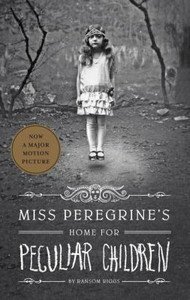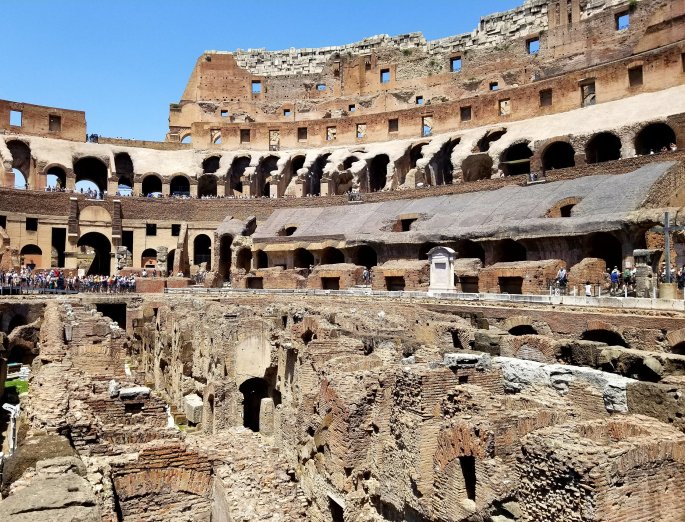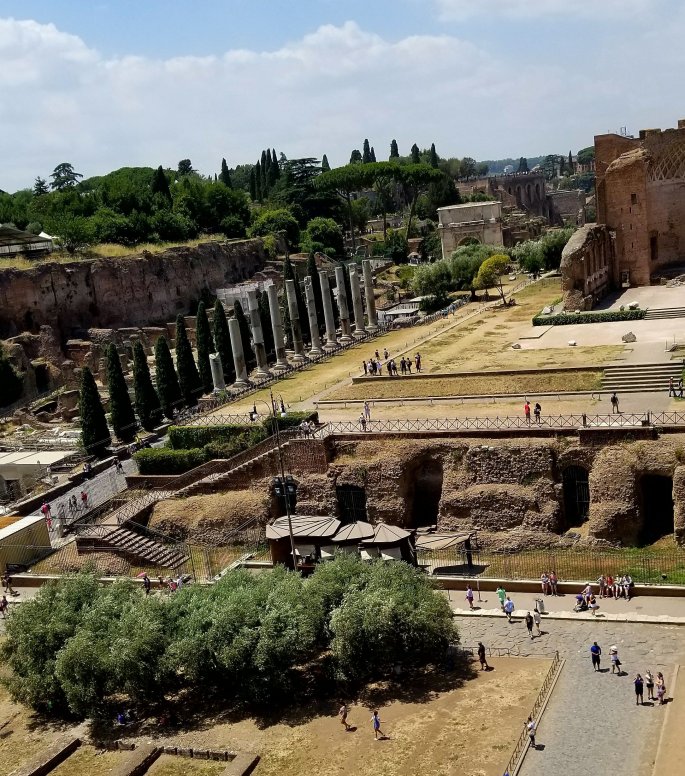For some nostalgic observers of the Antebellum era, there exists a sort of curious romanticism wedded to the images of sweeping plantations and genteel folk in their crisp clean clothing, drinking mint juleps on the grand front porch. Indeed, in the mid-19th century, some considered the “southern cotton planters as the last survival of a noble and knightly virtue…a sort of American aristocracy holding its own against the onslaught of Yankee capitalism” (Guelzo 26). Romanticism emerged as “a backlash against the Enlightenment” from “the shambles of post-Napoleonic Europe, which snarled at the failures of reason and glorified the romance of authority, especially when it was rooted in knightly myth, chivalrous orders, and medieval faith” (Guelzo 26). Prevailing political sentiments turned from the presumptive importance of natural rights to the “ineffable experience of nationhood…It was each nation’s collective and organic experience that made its people what they were, not some inherent human qualities shared equally by everyone”(Guelzo 27). This shift in thinking helped justify the plantation culture because the plantation embodied the mystery of Southernness” (Guelzo 27). With its medieval imagery and allusions to nobility and tradition, plantation culture appealed those who wanted to create a particularly southern aristocracy. To maintain economic viability, planters needed slave labor, and any threat to it was perceived as an attack against the control of the collective.
Until the 1850s the United States had put off dealing with the issue of slavery, but “opponents of capitalism–especially those who disparaged northern factories and big cities–began their attacks in earnest for the first time in American history.” They pointed out that as cities were inundated with immigrants, crime increased alongside prostitution, begging, and gangs. Most immigrants came from Europe “lured by jobs, land, and low taxes, a small standing army (with no conscription), a relatively tiny government, complete absence of mandatory state church tithes, no state press censorship, and no czarist or emperor’s secret police” (Schweikart and Allen 252- 253). A large influx of Irish stayed in Northeast urban areas, while Germans gravitated to the Appalachian Valley and the northern Midwest. By 1885 Jews owned all but 17 of 241 clothing firms in New York City. The point is that all the immigrant groups found niches, and all largely succeeded except African Americans. Although there were pockets of free blacks who were successful in their own right, millions more were held in bondage (Schweikart and Allen 256-257). Because the vast majority of immigrants were European, the Africans’ “complexion marked them off as a different race of beings to European eyes, so fugitives could be more easily identified and recaptured. Owners saw all people of African descent as a coherent group—black—so their labor could be bounded with an entirely different set of assumptions than would prevail for white labor.” (Guelzo 29). As agriculture flourished in the South, so did the institution of slavery: the planters believed it created a genteel way to avoid the evils of the urban North.
Governance on Southern plantations obviously relied on the subjugation of individuals to the needs of the collective. In a disturbing echo of the past, it has become de rigueur today to segregate politicized groups by superficial traits, and to promote collective desires by vilifying and silencing anyone who does not follow the collective’s prescribed belief system and political identity. Most alarming is that the arguments made in support of slavery in the antebellum era are eerily similar to those made today in support of collectivist governance and, arguably, set a dangerous precedent for the trajectory of oppressive power globally and within the United States.
In the Antebellum era, “a slave, by simple definition, had no legal or social existence: a slave could have no right to hold property, could enjoy no recognition of marriage or family, and could not give testimony (even in self-defense) before the law…Slaves could be beaten and whipped, bullied, brutalized, and raped” (Guelzo 30-31). They were “prohibited by law and public opinion…from reading the Book of Life. [Their] intellect ha[d] been destroyed as much as possible, and every ray of light…shut out from [their] minds. The oppressors… ha[d] become weak, sensual, and rapacious” (Daley 2-3). They “provided a docile workforce that did not require an equal share of one’s wealth or success, and… seemed to set the region off, not only from the North but also from the rest of the nineteenth century” (Guelzo 28). Basically, “slavery embodied the worst aspects of unfettered capitalism wedded to uninhibited government power, all turning on the egregiously flawed definition of a human as ‘property’” (Guelzo 257).
As popular sentiments began changing, particularly in the North and areas that did not depend on slavery to succeed, it became difficult to ignore the humanity of Africans, so “Southerners needed the force of government to maintain and expand slavery… without it a combination of the market and slave revolts would have ultimately ended the institution (Schweikart and Allen 257). Eventually, “many slave owners felt paralyzed by guilt not necessarily because of slavery but because of the abuses endemic to southern slaveholding” and this “produced a clamorous urge on the part of white Southerners to justify the continuation of slavery on the grounds that slavery was actually a benefit of sorts to African Americans” (Guelzo 31-31). Schweikart and Allen contend that “When Alabama’s Franklin W. Bowdon wrote about the property rights in slaves “if any of these rights can be invaded, there is no security for the remainder,” Northerners instinctively knew that the inverse was true: if one group of people could be condemned to slavery for their race, another could suffer the same fate for their religious convictions, or their political affiliations” (257). This was an impetus to stand against slavery.
But slavery’s proponents argued that it was merely a reflection of the best kind of collectivism. Socialist and Communist leaders in France consisted of “the most cultivated and profound minds in the nation,” postulated George Fitzhugh in 1854,
and we have conclusive proof that liberty and equality have not conduced to enhance the comfort or the happiness of the people… We proceed to show that the war of the wits, of mind with mind, which free competition or liberty and equality beget and encourage, is quite as oppressive, cruel and exterminating as the war of the sword, of theft, robbery, and murder, which it forbids. It is only substituting strength of mind for strength of body.” (Gilder Lehrman Course Reader 5)
Fitzhugh insisted that the free market fails to protect the weak from oppression, and that the promise of opportunity to succeed on one’s own merits is cruel to those, like African slaves, who are not capable of navigating capitalist society. “We do not set children and women free because they are not capable of taking care of themselves,” he reasons. “To set them free would be to give the lamb to the wolf to take care of. Society would quickly devour them…But half of mankind are but grown-up children, and liberty is as fatal to them as it would be to children” (GLCR 5). Fitzhugh argues that a free society destroys morals, families, businesses, and well-being (GLCR 6), but that the institution of slavery in the South allows “small properties [to] descend from generation to generation in the same family; there is…stability and permanency of property” (GLCR 7). In fact, the slave is happy on the plantation, insists Fitzhugh, because he is promised security:
We provide for each slave, in old age and in infancy, in sickness and in health, not according to his labor, but according to his wants. The master’s wants are more costly and refined, and he therefore gets a larger share of the profits. A Southern farm is the beau ideal of Communism; it is a joint concern, in which the slave consumes more than the master, of the coarse products, and is far happier… he is always sure of a support; he is only transferred to another master to participate in the profits of another concern; he marries when he pleases, because he knows he will have to work no more with a family than without one, and whether he live or die, that family will be taken care of.” (GLCR 7)
Furthermore, “a state of dependence is the only condition in which reciprocal affection can exist among human beings…the relation of master and slave is one of mutual good will…[and] the ready submission of the slave, nine times out of ten, disarms his [master’s] wrath…” (GLCR 7).
Some followers of the French utopian Charles Fourier envisioned slave plantations that would slowly emancipate slaves, claiming “that their strategy of peaceful social reconstruction was an enlightened and workable alternative to the more aggressive antislavery tactics of moral suasion and political coercion.” Fourierists believed that plantation slavery was simply one form of “‘servitudes’ inflicted upon humanity by corrupt and immoral social arrangements” endemic to capitalist civilization, such as employment and marriage (Guarneri 6). But even as they touted emancipation, the Fourierists used slaves as their pawns in their plan to accomplish socialist utopia, envisioning them working their way to freedom as “attractive labor” (Guarneri 13).
John C. Calhoun argued that “never before has the black race of Central Africa, from the dawn of history to the present day, attained a condition so civilized and so improved, not only physically, but morally and intellectually” (Calhoun 3) through southern plantation enslavement. Anti-slavery sentiment must be confronted aggressively, he said, because it “will continue to rise and spread, unless prompt and efficient measures to stay its progress be adopted. Already it has taken possession of the pulpit, of the schools, and, to a considerable extent, of the press; those great instruments by which the mind of the rising generation will be formed” (Calhoun 2). “Blind fanatics” would teach children to hate slavery, yet “there is and always has been in an advanced stage of wealth and civilization, a conflict between labor and capital. The condition of society in the South exempts us from the disorders and dangers resulting from this conflict; and which explains why it is that the political condition of the slaveholding States has been so much more stable and quiet than that of the North” (Calhoun 3).
In Georgia planters believed that “by soliciting state investment in internal improvement projects, [they] simultaneously encouraged development and ensured their continued dominance over growing bourgeois and white working classes.” Hungry for continued control “in the final decade of the antebellum period, key slaveholding intellectuals evolved a cogent argument for a “progressive” slave society based on state mediation of the economy” (Morgan 2-3).
These were not just fringe opinions relegated only to backwater Southern towns. The federal Fugitive Slave Act of 1850 arguably recognized and supported this institution of subjugation. Fugitives could be arrested without due process. Their testimony was moot and fines up to one thousand dollars were levied against anyone else who did not comply with the law (GLCR 20). The law “established no statute of limitations for runaways, which meant that runaways from as long as twenty years before (and more) could be captured and reenslaved (Guelzo 72). “It virtually made every Northerner an accomplice to the betrayal and seizure of runaway slaves;” they were now “forced to consider how they would act if a slave owner or federal marshal in hot pursuit of a runaway should summon them to join a federal slave-catching posse” (Guelzo 73). In 1850 Jermain Wesley Loguen, an escaped slave, appealed to the city of Syracuse, New York, to stand against the Fugitive Slave Act and declare itself a refuge against “the bloodhounds.” He encouraged “the people of Syracuse and of the whole North [to] meet this tyranny and crush it by force, or be crushed by it. This hellish enactment has precipitated the conclusion that white men must live in dishonorable submission, and colored men be slaves.” He explained that organizations had offered to purchase his freedom, but he refused because he owed “[his] freedom to the God who made [him]…and w[ould] not…consent that anybody else shall countenance the claims of a vulgar despot to [his] soul and body” (Daley 9). Harriet Beecher Stowe “made her readers hate slavery, and she made them hate the Fugitive Slave Law, too,” by awakening “Northerners to the hideous realities the new law was bringing to their own doorsteps” (Guelzo 75).
As sentiments shifted, it is likely that abolition would have inevitably occurred without a Civil War—or perhaps secession would have successfully created two nations from one—slaveholding and free. Despite great efforts to force the abolitionist cause to the forefront of the American conscience, political opinion before the advent of technology was comparatively slow to conform to popular opinion. With the proliferation of radio, television, computers, smart phones, social media, instant news and information, this is no longer the case. Of great concern today is the increasing number of young people who claim to believe that government control in the name of safety and security is preferable to freedom and, in many ways, the popular political opinion within the United States appears to be regressing back to antebellum sentiments in the guise of equality.
Just this year BuzzFeed News and Maru/Blue conducted an online survey of millennials. The study found that “roughly one out of three millennials (31%) say they are a democratic socialist, a socialist, or would identify as either,” and “nearly half of all millennial Democrats (48%) identify as democratic socialists or socialists” (Haltiwanger). Fifty-seven percent of all Democrats feel positively about socialism (Gallup, Inc.).
The goal of socialism is to transform society from the traditional to a new world order. There exist various opinions about what this means and what will ultimately be accomplished, but socialism, as designed by Marx and Engels, is a violent step in the process of transforming society from traditional family/work/church existence (bourgeoisie) to one that is controlled by the working class (proletariat) and, inevitably, the State. Socialism itself has never been the end goal; it has always been a means to a completely revolutionary end: “The proletarian movement is the self-conscious, independent movement of the immense majority, in the interest of the immense majority. The proletariat, the lowest stratum of our present society, cannot stir, cannot raise itself up, without the whole superincumbent strata of official society being sprung into the air” (Marx and Engels 11). There lies a “civil war, raging within existing society, up to the point where that war breaks out into open revolution, and where the violent overthrow of the bourgeoisie lays the foundation for the sway of the proletariat,” for the bourgeoisie’s “existence is no longer compatible with society.” What “the bourgeoisie therefore produces, above all, are its own grave-diggers” (Marx and Engels 12).
To Bela Kun, a Hungarian Communist revolutionary who was the de facto leader of the Hungarian Soviet Republic, those words “toll the death knell of moribund capitalist society and sound the tocsin of the attacking proletarian armies” which are “storming the fortresses of capitalist exploitation and oppression” to establish a utopia that “has become a science and finally a reality.”(Kun 4)
Utopia has always been the perfect society whose details vary with the desires of its dreamer. Thomas More envisioned “magistrates never engag[ing] the people in unnecessary labour, since the chief end of the constitution is to regulate labour by the necessities of the public, and to allow the people as much time as is necessary for the improvement of their minds, in which they think the happiness of life consists” (More 24). “Their chief dispute is concerning the happiness of a man” (More 30), but this community also consists of subservient women, torture, and slaves. Many versions of Utopia exist, and most create equal, fair societies—equal and fair for those who are not being tortured or put into slavery—under a strong central authority.
Today those with a socialist utopian vision of a State-imposed equal society call themselves progressives or social democrats. Kun denounced the social democrats of the 1930s, mocking them as watered-down “piffle,” “vulgar,” “irksome” and a “garbled apology for capitalism” (Kun 21), yet the Democratic Socialists of America just as openly declare their desire for revolution (DSA). Their platform consists of redistribution of wealth, using a variety of tactics to create a “more just” society, and to radically transform many government and economic structures as part of the Democratic Party. Of particular note, much like the abolitionists of Fitzhugh’s fears, they find that schools, colleges and universities are important to American political culture. They are the places where ideas are formulated and policy discussed and developed. Being an active part of that discussion is a critical job for young socialists. We have to work hard to change people’s misconceptions about socialism, to broaden political debate, and to overcome many students’ lack of interest in engaging in political action. Off-campus, too, in our daily cultural lives, young people can be turning the tide against racism, sexism and homophobia, as well as the conservative myth of the virtue of “free” markets. (DSA)
This growing movement of American society towards socialism might be credited to teacher unions and the militant work of socialists on campuses. According to a publication of the Democratic Socialist Labor Commission and the Young Democratic Socialists of America titled “Why Socialists Should Be Teachers,” strong unionism has contributed to “rich, militant labor history…many teachers and service personnel have begun to view politics through the lens of class consciousness. With socialists active in our organizing, we’ll be in a strategic position to make bold, visionary demands to take on the capitalist class” (DSA 2). They openly declare that “we, as socialists need to build a “militant minority” of class conscious teachers that can move our unions in a more militant and democratic direction” (DSA 7). Addressing potential young teachers, they promise that “your exchanges with students can help shape a generation of critical thinkers and political actors. You will be a key source for how many young Americans come to perceive the world around them. You may even have the opportunity to teach about social justice and liberation history. And, crucially for organizers, your political work doesn’t end at the classroom door. Your interactions and shared struggle with co-workers can be just as fulfilling” (DSA 9).
Also, the National Education Association, one of the most powerful lobbyist groups in the country, lists as its core values “a just society,” and “collective action” for the “common good” (NEA). Although such language appears harmless and pleasant, it is core to communism, the ultimate goal of socialism. Jonathan Daly explains that
As one Communist pedagogue [A. Sventsitskii] wrote, “It is necessary to educate the child in such a way that he will achieve happiness only by being a socialist. To speak more colorfully, it is necessary to tune the strings of the human soul in such a way that these strings create harmony only when playing the melody of the socialist order.”15 Or, in the words of Anatoly Lunacharsky, the commissar for enlightenment, “Each person must think as WE, must become a living, useful corresponding organ or part of this WE.” Such training, he insisted, should begin at age five.16 Indeed, the Eighth Party Congress in March 1919 defined schools in Soviet Russia as “an instrument for the Communistic regeneration [pererozhdenie] of society.”17 Yet, according to Nikolai Bukharin, education should be viewed in the broader context of “proletarian coercion in all its forms.” (Daly 5-6)
Unfortunately, this militant ideology and the often aggressive behavior of socialist groups targeting college and K-12 campuses to influence young Americans to create social justice utopias resembles that of the very despots they claim to hate, who ironically owned oppressive cotton plantations, expounded the virtues of slavery, and claimed that the antebellum genteel lifestyle was necessary for the common good of the collective.
For instance, despite the oft-touted moral high ground of progressive perceptions, a 2018 study revealed that “32.3 percent of the 461 colleges and universities analyzed maintain policies that seriously infringe upon the free speech rights of students” in the guise of social justice (FIRE). These “cultural Marxists drive society morally into an identity crisis by the means of the false standards of a hypocritical” ethos (Mueller). Disturbingly, a growing faction of disaffected millennials aligned with the Democrat Party believe that government should be allowed to silence speech that triggers negative emotions (Poushter). And some on the forefront of the political and cultural Marxist revolution call for violence and marginalization against anyone who does not agree with them (Scalise), taking no umbrage at limiting rights of others (Barrett).
Much of the most recent impetus for this ideology comes from curriculum taught in universities and colleges, particularly teacher certification programs that inculcate the Critical Race Theory and White Privilege. These are rather new approaches to the same social class war. Critical Race Theory starts with the presumption that white racism is endemic, permanent, and permeates all aspect of the culture, both conscious and unconscious (Solorzano 6). Critical Race Theory boasts an overall commitment to social justice and the elimination of racism, but is only part of the greater goal of ending gender, class and sexual discrimination (Solorzano 4). Therefore, White Privilege must be uncovered, admitted, and interrupted in the classroom because
Whiteness is a complex, hegemonic, and dynamic set of mainstream socio-economic processes, and ways of thinking, feeling, believing, and acting (cultural scripts) that function to obscure the power, privilege, and practices of the dominant social elite. Whiteness drives oppressive individual, group, and corporate practices that adversely impact schools, the wider U.S. society and, indeed, societies worldwide. At the same time, whiteness reproduces inequities, injustices, and inequalities within the educational system and wider society. (Lea and Sims 1-2).
New teachers in the k-12 classroom, therefore, teach students that whiteness is hateful, and that skin color is more important than individual character when determining a person’s worth. Students carry this belief onto the streets, and since whiteness inherently seeks to oppress and marginalize people of color, classes, women, LGBTQ, etc., whiteness must be oppressed and marginalized.
Antifa in the United States, which was born of this mantra in Europe and imported “is often called ‘revolutionary anti-fascism’ that could form the foundation of the broader revolutionary struggle;” a kind of “ideology, an identity, a tendency or milieu, or an activity of self-defense…it is simply one of a number of manifestations of revolutionary social politics (broadly construed)…a collective [militant] self-defense” says Mark Bray, the author of the Anti-Fascist Handbook (xvi).
However, “Bray presents today’s Antifa as though it were the glorious legitimate heir to every noble cause since abolitionism,” notes Diana Johnstone, “but there were no anti-fascists before fascism, and the label “Antifa” by no means applies to all the many adversaries of fascism” (Johnstone 2). “Since historic fascism no longer exists,” argues Johnstone, Bray’s Antifa have broadened their notion of “fascism” to include anything that violates the current Identity Politics canon: from “patriarchy” (a pre-fascist attitude to put it mildly) to “transphobia” (decidedly a post-fascist problem). The masked militants of Antifa seem to be more inspired by Batman than by Marx or even by Bakunin” (Johnstone 2-3).
Maybe, but the hypocrisy of using militant force to bring about peaceful change is evident, and teaching that a group of human beings is inherently bad and lesser based on their skin color smacks of antebellum rhetoric. Adherents argue that only whites have the capacity to be racist, as they are the largest, richest, and most powerful group. This justification is simply a mirror of Fitzhugh and Calhoun’s argument that blacks must be kept in slavery because they are the smallest, poorest and least powerful group. To purposely inundate schools with educators who believe it, teach it, mirror and model it, can only be considered indoctrination. This is not an abolitionist movement. If anything, its goal is to create a new kind of slave—one that relies on the government for all things.
Antifascist movements have inspired college and university campuses to allow freedom of speech in only very limited, so-called free speech zones (sometimes only a few square feet in quiet areas of campus), and become hosts to violent scenes such as at “University of Virginia, the College of William & Mary and the University of California at Berkeley, among others, where appearances by controversial speakers resulted in protests with armed police officers reminiscent of a war zone, with students doing their best to interrupt speakers” (Selingo 1).
In 2017, Gallup, the Knight Foundation and the American Council on Education partnered with the Charles Koch Institute and the Stanton Foundation and found that thirty seven percent of college students said that shouting down speakers was acceptable. Ten percent said it was acceptable to use violence to prevent someone from speaking (Selingo 2). In the same poll, “when asked whether free expression or diversity and inclusion is more important, they tilt toward saying diversity and inclusion are. Students are as likely to favor campus speech codes as to oppose them, and they overwhelmingly favor free speech zones on campus. Students do not believe the U.S. Constitution should protect hate speech, and they continue to support campus policies that restrict both hate speech and wearing stereotypical costumes” (Knight Foundation). Definitions of hate speech are as reliable as those who write them. Limiting ideas, stifling discussion, insulating through forced segregation based on skin color, political persuasion, voting records, anatomy, or chosen profession is indicative of plantation politics.
Similarly, less-educated looting mobs disrupt traffic, threaten police, and attack drivers. They are easy pawns for organizations looking to instigate revolution. Groups that destroy Civil War statues because they memorialize individuals associated with the South are also arguably born of this trend in cultural Marxism and social justice indoctrination in lower education that does not accurately educate or educate at all about the many facets of the Civil War and all its shades of blue and grey. This is the “‘dangerous class’, [lumpenproletariat] the social scum, that passively rotting mass thrown off by the lowest layers of the old society,” that “may, here and there, be swept into the movement by a proletarian revolution; its conditions of life, however, prepare it far more for the part of a bribed tool of reactionary intrigue” (Marx and Engels 11).
The ideological conflict is ethically framed, in that anyone who does not agree with the demands and expectations of the moment is vilified as hateful and dangerous and must be criminalized, marginalized, oppressed, scared, and limited. The ones who participate feel good about their involvement and righteously indignant in their misguided attempt to eliminate so-called fascists (republicans and, therefore, supposedly capitalists) to create a revolutionary world order (Yost). Ironically, they utilize violent, oppressive measures and do not perceive their own hypocrisy.
Conspicuously missing in education today is the in-depth study of historical documents and literature as they were understood in the era in which they occurred. Common Core State Standards encourages deep reading of complex texts like Lincoln’s “Gettysburg Address” and “Second Inaugural Address” (Common Core 10) without giving students any contextual information (Digital Chalkboard). History has become social studies—more of a focus on society as a collective human entity, rather than on historical events and individuals who contributed to them. Younger generations are not being taught about the vast problems of socialism and communism in practice, and the death millions under such regimes. They aren’t learning about the contributions to the world that individualism in the form of capitalism has provided, and that millions have been lifted out of poverty by allowing individual freedom of speech and press, even when the words are uncomfortable or hurtful. By silencing those with which we disagree and marginalizing groups based on superficial attributes, and encouraging young people to believe the government should provide economic and safety security to the collective, we run the risk of allowing central government control to create citizen slaves dependent on its reciprocal affection and management of individual lives in much the same way African American slaves were forced to be dependent on plantation owners.
Barrett, Lisa Feldman. “When Is Speech Violence?” The New York Times, The New York Times, 15 July 2017, www.nytimes.com/2017/07/14/opinion/sunday/when-is-speech-violence.html.
Bray, Mark. Antifa: The Antifascist Handbook. Melville House Publishing, 2017.
Calhoun, John C. “Slavery a Positive Good.” Teaching American History, teachingamericanhistory.org/library/document/slavery-a-positive-good/.
“Common Core State Standards for English Language Arts & Literacy in History/Social Studies, Science, and Technical Subjects Appendix B: Text Exemplars and Sample Performance Tasks.” Corestandards.org, Common Core State Standards Initiative, corestandards.org/assets/Appendix_B.pdf.
“Democratic Socialists of America (DSA) -.” Democratic Socialists of America (DSA), http://www.dsausa.org/.
Daley, James. Great Speeches by African Americans: Frederick Douglass, Sojourner Truth, Dr. Martin Luther King, Jr., Barack Obama, Jr., and Others. Dover Publications, 2006.
Daly, Jonathan. “Bolshevik Power and Ideas of the Common Good.” Intercollegiate Studies Institute: Educating for Liberty, Modern Age A Conservative Review, 10 Mar. 2016, home.isi.org/bolshevik-power-and-ideas-common-good.
“DIGITAL CHALKBOARD.” Unit 3: Supporting Student Comprehension of Informational Text 3.1 What Is Close Reading?. http://www.mydigitalchalkboard.org/portal/default/Content/Viewer/Content?action=2&scId=306592&sciId=18604. Interview with California State University, San Diego professor, Dr. Douglas Fisher.
FIRE, “Speech Code Reports.” www.thefire.org/spotlight/reports/.
Gallup, Inc. “Democrats More Positive About Socialism Than Capitalism.” Gallup.com, 13 Aug. 2018, news.gallup.com/poll/240725/democrats-positive-socialism-capitalism.aspx.
Gilder Lehrman Course Reader, 2018.
Guarneri, Carl J. “Two Utopian Socialist Plans for Emancipation in Antebellum Louisiana.” Louisiana History: The Journal of the Louisiana Historical Association, vol. 24, no. 1, 1983, pp. 5–24. JSTOR, JSTOR, http://www.jstor.org/stable/4232237.
Guelzo, Allen C. Fateful Lightning: a New History of the Civil War and Reconstruction. Oxford University Press, 2012.
Haltiwanger, John. “A Large Percentage of Millennials Are Embracing Socialism and a Majority Disapprove of Trump, a New Poll Indicates.” Business Insider, Business Insider, 4 Oct. 2018, www.businessinsider.com/millennials-are-embracing-socialism-poll-indicates-2018-10.
Kun, Bela. “Address Delivered at Plenum Executive Committee of the Young Communist International.” Marxism Versus Social Democracy, Marxists.org, http://www.marxists.org/archive/kun-bela/pamphlets/1932/12.htm.
Johnstone, Diana. “Antifa in Theory and in Practice.” Www.counterpunch.org, 10 Oct. 2017, http://www.counterpunch.org/2017/10/09/antifa-in-theory-and-in-practice/.
Knight Foundation. “Free Expression on Campus: What College Students Think about First Amendment Issues.” Knight Foundation, http://www.knightfoundation.org/reports/free-expression-on-campus-what-college-students-think-about-first-amendment-issues.
Lea, Virginia and Sims, Emma Jean. “Undoing Whiteness in the Classroom: Different Origins, Shared Commitment.” Counterpoints, vol. 321, 2008, pp. 1–28. JSTOR, JSTOR, http://www.jstor.org/stable/42979956.
Marx, Karl, and Engels, Frederick. “Manifesto of the Communist Party.” Marxists.org, http://www.marxists.org/archive/marx/works/1848/communist-manifesto/ch01.htm.
More, Thomas. UTOPIA. Project Gutenberg, http://www.gutenberg.org/files/2130/2130-h/2130-h.htm.
Morgan, Chad. “Progressive Slaveholders: Planters, Intellectuals, and Georgia’s Antebellum Economic Development.” The Georgia Historical Quarterly, vol. 86, no. 3, 2002, pp. 398–422. JSTOR, JSTOR, http://www.jstor.org/stable/40584570.
Mueller, Anthony P. “Is Cultural Marxism America’s New Mainline Ideology? | Antony P. Mueller.” Mises Institute, Mises Institute, 1 Oct. 2018, mises.org/wire/cultural-marxism-americas-new-mainline-ideology.
NEA. “Our Mission, Vision and Values.” National Education Association, http://www.nea.org/home/19583.htm.
Poushter, Jacob. “40% Of Millennials OK with Limiting Speech Offensive to Minorities.” Pew Research Center, Pew Research Center, 20 Nov. 2015, www.pewresearch.org/fact-tank/2015/11/20/40-of-millennials-ok-with-limiting-speech-offensive-to-minorities/.
Selingo, Jeffrey J. “College Students Support Free Speech – Unless It Offends Them.” The Washington Post, WP Company, 12 Mar. 2018, http://www.washingtonpost.com/local/college-students-support-free-speech–unless-it-offends-them/2018/03/09/79f21c9e-23e4-11e8-94da-ebf9d112159c_story.html?utm_term=.517414b509b4.
Scalise, Steve. “Rep. Steve Scalise: When Eric Holder, Other Dems Call for Violence, That’s a Direct Threat to Our Democracy.” Fox News, FOX News Network, www.foxnews.com/opinion/rep-steve-scalise-when-eric-holder-other-dems-call-for-violence-thats-a-direct-threat-to-our-democracy.
Schweikart, Larry, and Michael Allen. A Patriot’s History of the United States: from Columbus’s Great Discovery to the War on Terror. Sentinel, 2007.
Solorzano, Daniel G. “Images and Words That Wound: Critical Race Theory, Racial Stereotyping, and Teacher Education.” Teacher Education Quarterly, vol. 24, no. 3, 1997, pp. 5–19. JSTOR, JSTOR, www.jstor.org/stable/23478088.
DSA teachers of West Virginia. “Why Socialists Should Become Teachers.” Why Socialists Should Become Teachers, teachers.dsausa.org/.
Yost, Zachary. “Antifa’s Handbook: A Primer on Violent Illiberalism.” The American Conservative, www.theamericanconservative.com/articles/antifas-handbook-a-sinister-primer-on-violent-illiberalism/.









































